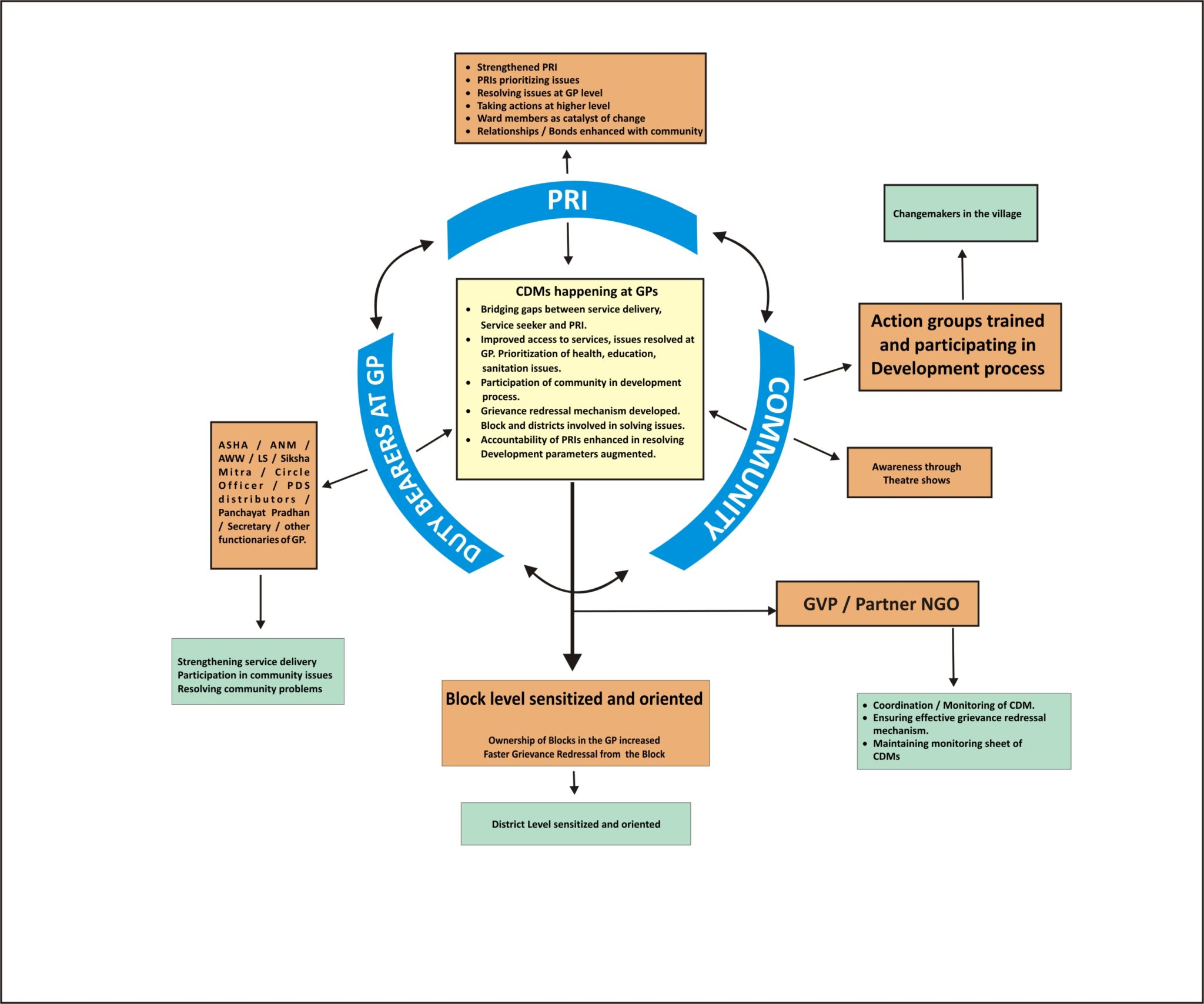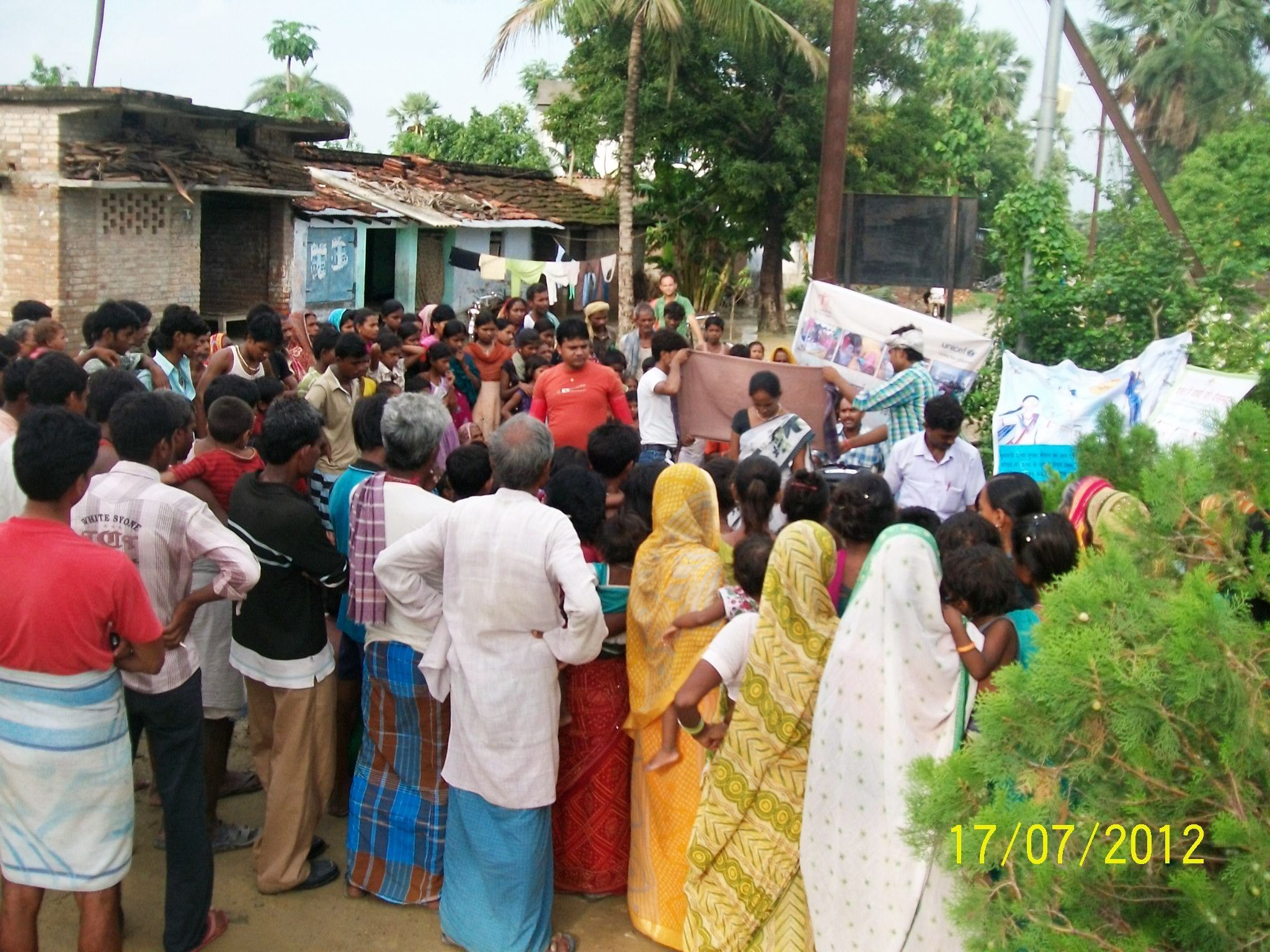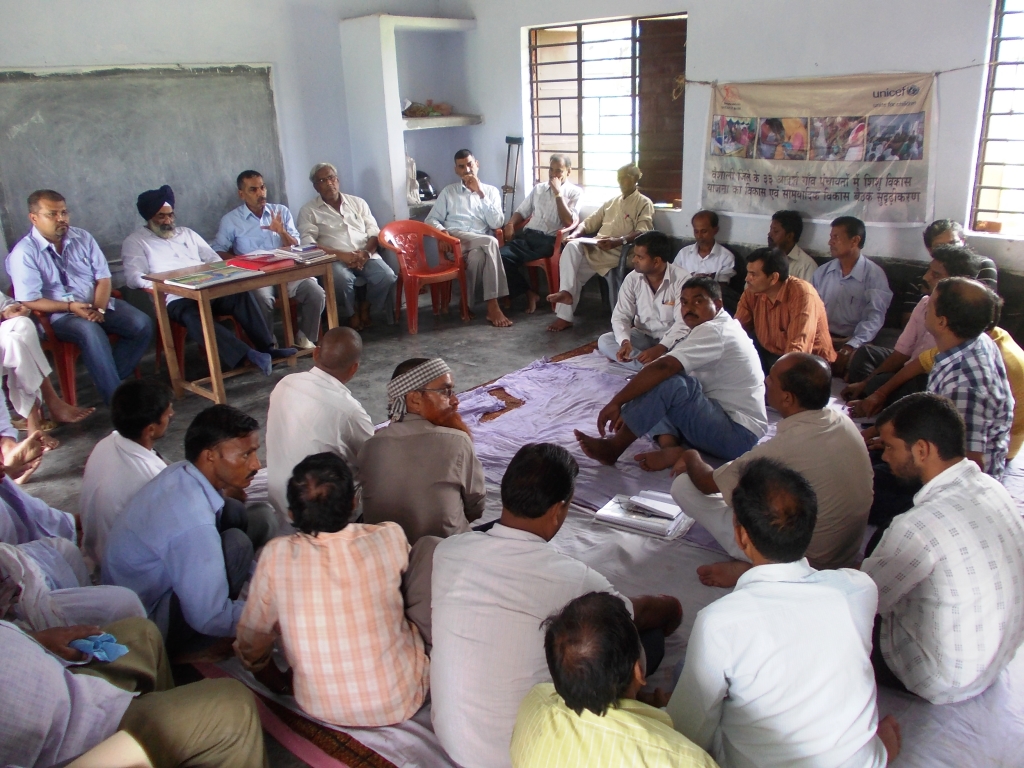Improvement of health indices need to address gaps in both access and use of health services. Thus health communication initiative supported by UNICEF at Vaishali not only targeted improving health seeking behaviour and awareness on available services, it also targeted mobilising community participation in monitoring access to services and creating a mechanism for voicing their needs and demands.

To strengthen linkage between service providers and service seekers, a system of monthly community development meetings (CDM) has been initiated in 33 GPs of Vaishali district. The initial goal was to establish a regular platform for interaction between Panchayat, front line workers and community to review the health situation, access to services and evolve a plan to strengthen access and use of services and mobilise improved health seeking behaviour. Later the objective was further expanded to cover local development issues including education, infrastructure, water and sanitation.
The CDMs are organised under the chairmanship of the Mukhiya who with the help of the functionaries and the community resolves issues. Participation of Lady Supervisors of ICDS, ASHA, AWWs, Vikas Mitra, Vikas Utprerak, Mukhiya, Ward members have been mobilised. BDO, MOIC, Junior Engineers, Block Health Managers, NGO representatives have also attended some of the CDMs.


CDMs have led to improved mapping of gaps in health services. Lists of non functional Anganwadi centres, AWCs with incomplete construction, AWCs without sanitation and water were compiled. Villages where there is no ASHA and Sub centres which are not functional were also listed. Other problems raised were unavailability of weighing machines and PSM, lack of slate, pencil and mats at the AWCs, poor availability of medicines at AWCs and SCs, inadequate number of vaccines at VHSND, delay in payment for JBSY, delay in payment of Muskaan and incentives to ASHAs, shortage of THR (in cases of large populations being served by an AWC), poor quality of mid day meal etc. Many of the issues like cleanliness of AWCs and schools, streamlining of VHSND, utilisation of VHSC and untied fund, construction of soak pits, improving roads and drainage were solved at Panchayat level. The issues which are not solved at Panchayat level are escalated to the Block and District level. Consultations are held regularly with the BDO and MOIC to resolve these issues (e.g. recruitment of ASHA). It has been observed that so far almost 45% of the issues have been solved out of which 35% have been solved at the Panchayat level itself. CDMs also helped in collection of applications for various Social Security Schemes and in some cases BDOs came to CDM for expediting the process. Villagers also demanded community toilet at Mahadalit Tola, improved quality of education, cleaning of toilets at school, construction of mini water tank etc. CDMs have resulted in improved immunization rate, participation of Panchayat members and community in VHSNDs, weighing of new born babies and AN care for pregnant women in VHNSDs. The overall process has helped in building trust and bringing the community and stakeholders in service delivery to work together in bringing about change in their locality.
Scaling up of CDM across the state will help in (a) participatory monitoring of access to health services, (b) establishing a grievance redress mechanism and (c) strengthening Panchayat and community participation in achieving health goals.
It is however important to establish a grievance escalation and redress mechanism at block and district levels for scaling up the system. While Panchayats have been mostly proactive in solving problems at their level, the delay on redress at block or district level (example – issues raised regarding education, sanitation and drinking water, applications for social security) have led to disenchantment. There is need for developing a monitoring system at the level of block and district administration to improve accountability of the concerned stakeholders. It is a ground reality that all PRIs may not give priority to the issues of child development and maternal and child health. CDM gives high visibility to local issues and this creates a pressure mechanism at grass roots for ensuring effective service delivery. Periodic participation of block level functionaries is important to address the challenges of ensuring regularity of CDM and actual participation of community. One officers at block office may be designated for monitoring of CDM in each GP for streamlining redress mechanism.
For More Information Contact:
